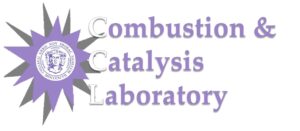- Education:
- Ph.D Student, Universidad Autónoma de Nuevo León.
- M.Sc. Analytical Environmental Chemistry, Universidad Autónoma de Nuevo León.
- B.S. – Universidad Autónoma de Nuevo León
- Conference Proceedings
- Sandoval, L.; Rivera, J.; Lucio, C. Comparación Entre Las Descomposiciones Térmicas de las Fases Condensadas de Carbonato de Guanidinio y Urea para su Uso Como Fuentes de Amoníaco. Memories of the III AMIDIQ International Congress, Mazatlan, Mexico 2013
- Dimas, G.; Rodríguez, M.; Miranda, R.; Sosa, C.; Suárez, M.; Cantú, M.; Sandoval, L.; Botello, E. Biosorption of Pb2+, Cd2+, Zn2+ and Cr3+ Ions by Algae Caulerpa Sp. Memories of the I AMIDIQ International Congress, Cancun, Mexico 2011
- Sandoval, L.; Alfaro, J. Distribution of Arsenic in Sediment from San Juan River Basin in Nuevo Leon, Mexico. Arsenic in Geosphere and Human Diseases, CRC Press, Tainan, Taiwan 2010
- Sandoval, L.; Alfaro, J. Inorganic Arsenic Assessment in San Juan River Basin and El Cuchillo Dam in Nuevo Leon, Mexico. Memories of the International Congress on Industrial Chemistry. Monterrey, Mexico 2009.
- Sandoval, L.; Alfaro, J.; Valdez, E. Evaluation of Arsenic Levels in San Juan River Basin and El Cuchillo Dam in Nuevo Leon, Mexico. 2nd International Congress on Arsenic in the Environment, Book of Abstracts. Valencia, Spain 2008.
- Alfaro, J.; Sandoval, L.; Macías, R. Análisis de las Especies Orgánicas e Inorgánicas de la Fracción Extraíble de Mercurio por HPLC. Memories of the International Congress on Industrial Chemistry. Monterrey, Mexico 2007
- Awards/ Affiliations
- Arsenic in the Environment International Congress Scholarship Award winner (2008 and 2010)
- Fundación UANL Scholarship Award winner (2008, 2010 and 2014
- Description of Research:
- The main objective on this research is to trace the residual solids and gases obtained from the thermal decomposition of urea, ammonium carbamate and guanidinium salts (acetate, carbonate and chloride). This solids have been researched as potential ammonia (NH3) producers. NH3 production is important for Selective Catalytic Reduction (SCR) applications, which are used frequently for nitrogen oxide (NOx) abatement. Ammonia production will be evaluated using Thermogravimetric Analysis coupled to Gas Chromatography coupled to Mass Spectrometry (TGA/GC-MS).
Ammonia production from thermal decomposition of the above mentioned solids will be used for a SCR application in laboratory. A modified zeolite catalyst will also be used, in order to study the effects of the ammonia produced by thermal decomposition and the transition metals using diverse characterization thechniques as Fourier Transform Infrarred Spectroscopy (FT-IR), X-Ray Diffraction Spectroscopy (XRD), and microscopy image techniques as Scanning Electron Microscopy (SEM) and Transmission Electron Microscopy (TEM).li>
- The main objective on this research is to trace the residual solids and gases obtained from the thermal decomposition of urea, ammonium carbamate and guanidinium salts (acetate, carbonate and chloride). This solids have been researched as potential ammonia (NH3) producers. NH3 production is important for Selective Catalytic Reduction (SCR) applications, which are used frequently for nitrogen oxide (NOx) abatement. Ammonia production will be evaluated using Thermogravimetric Analysis coupled to Gas Chromatography coupled to Mass Spectrometry (TGA/GC-MS).

